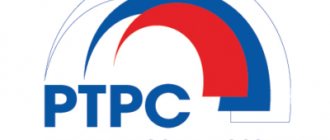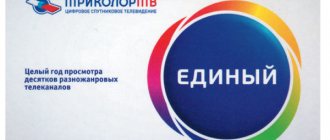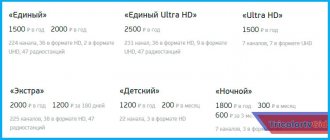Immediately after the New Year holidays, Russians may be left without their favorite series and television shows. Experts assure that low-income citizens, residents of remote areas and pensioners will suffer first as a result of the reform.
The transition to digital television broadcasting is scheduled for January 15, 2019, analogue broadcasting is subject to complete cancellation. Many channels will become paid.
How is digital television different from analogue?
Analogue broadcast format is the original format used since the advent of television. Today it is considered obsolete, and the whole world is moving away from it in favor of numbers.
Digital television has a number of advantages, and there are two main advantages over the analog format.
Firstly, digital television allows us to move away from the usual “one frequency, one channel” scheme. 10 channels are broadcast at once on the same broadcast frequency in digital format. Considering that there are now hundreds of different television channels, this is an important nuance.
Secondly, the quality of image and sound in digital is incomparably better. In fact, the viewer receives exactly the signal that the television company sends from the center. No losses or interference.
There are other additional benefits. For example, digital television broadcasting potentially makes it possible to transmit not only a television signal, but also additional textual information, makes it possible to conduct online surveys of viewers, etc.
The concept of switching to a digital broadcast format has been adopted in Russia for quite some time, and in 2021 this transition should be completed completely.
Photo: digital.gov.ru
Terrestrial digital TV
Russian digital television has been actively developing since 2009. At this time, the first multiplex was launched, that is, a package of television and radio channels broadcasting on the same frequency, which included 10 main federal channels. Among them are Channel One, Rossiya 1, NTV, Karusel and others. Broadcasting is carried out almost throughout the country, and viewing is free for viewers.
In 2013, Russian digital terrestrial television was replenished with a second multiplex, which also consists of 10 channels: REN-TV, Pyatnitsa, STS, TNT, Muz-TV, etc. So far, broadcasting of the second multiplex is available only to 65% of the population countries. The third multiplex is only in Crimea, since there is the necessary infrastructure there, built by the Ukrainian authorities.
To receive 20 free federal channels you need a modern TV or set-top box that supports the DVB-T2 standard. Wifire provides its customers with the opportunity to rent a TV set-top box for 99 rubles per month or buy it for 4,800 rubles (prices valid as of 08.2017). No special knowledge or skills are required to connect the equipment; the set-top box is easy to set up. For it to work, you only need a stable Wi-Fi connection to the Internet. In this case, the provider can be anyone.
Who is affected by the transition to digital television broadcasting?
First of all, it affects those who receive a television signal from a local transmitter using a conventional antenna - personal or collective.
Those who use satellite or digital cable television are not affected by the transition to digital format - they already use it.
If you watch television channels, receiving a signal from a local transmitter, you need to prepare to turn off the analog format if you have not already done so.
Why the “screen” will never become a “pipe”: what the pay TV market has come to in 2021
Over the past few years, pay television has made several sharp turns in terms of monetization, content, relations with related industries - and, according to experts, it has also increased the revenue of Internet providers. But in 2020, it may stop dragging - analysts believe that the market is saturated, and in the near future the audience will begin to leave it, and those services that were previously considered growth drivers may become its killers, since they are the ones who will take viewers with them. Whether this is so and what the industry had come to by mid-2019 , Continent Siberia looked into it.
The last year of growth - analysts' opinion
The analytical agency J'son & Partners Consulting released its forecast regarding the near future of pay TV in Russia in the middle of this year, and its conclusions can hardly be called comforting. Pay TV penetration in Russia reached 78% (43.6 million households) in 2019, but it will never be 100%. If operators still manage to finish this year with a plus, albeit a minimal one (despite the fact that the average bill per subscriber - ARPU - has decreased since the beginning of the year from 189 to 180 rubles per month), then next year an outflow will begin, which in subsequent years will only be accelerate.
State TV is going digital: what's next?
As a sample, analysts suggest considering the pay TV market in the United States, where the same trends are taking place as in Russia, but several years ahead. There, this industry has been in crisis for quite some time; companies, having exhausted the possibilities for growth in breadth, began to attract audiences with “subscription” services - and now these services are attracting the audience to themselves. In the coming years, according to analysts at J'son & Partners Consulting, something similar is possible in Russia.
“The trends that are observed today in the pay TV market in Russia did not appear yesterday. Firstly, pay TV penetration in Russia is really high. As a result, the growth rate of the subscriber base has decreased. The average bill per subscriber (ARPU) remains stable and one of the lowest in the world. Stability is ensured by multidirectional trends: price competition is driving down price competition, and growth is driven by monetization of additional services,” comments Alexey Prokhorov, director of the communications department at NTV-Plus .
"Anti-operator TV": how Beeline found a way to recapture Russia from pirates
A slightly more optimistic picture is given by the analytical agency TMT Consulting. According to his estimates, in April-June the number of pay TV subscribers in Russia increased by 0.4% compared to the previous quarter and amounted to 44.5 million households. The average bill per subscriber was 190 rubles per month, the total market volume increased by 0.5% - to 25.2 billion rubles per month. They characterized the decline in growth rates in the first quarter as a “usual seasonal decline.” TMT Consulting agreed that growth through “simple solutions” has exhausted itself, despite the fact that 20% to 25% of Russian households do not use pay TV services. But for them, OTT operators and online services with content are not competitors to PayTV operators, and they do not predict tools for industry growth and audience departure in the coming years (including due to the transition of state television to digital).
Market participants agree with this. “Judging by the trends and business indicators of the telecom market, online services can become a driver of average bill growth. According to Ernst & Young, 8% of the country's population regularly buys OTT content. This trend is mainly characteristic of Moscow and St. Petersburg, they account for 18% of acquisitions, in other large cities, including Novosibirsk, about 7–8%, notes the press secretary of ER-Telecom Holding (operates in Siberia under the brands "Dom.ru", "Electronic City") Dmitry Smirkin . — According to our own estimates, about 50% of residents in the cities where the company operates have used free online cinemas at least once, and only 12% of them have made purchases. As a rule, this does not mean leaving traditional TV in favor of OTT services.”
The main outflow for the first half of the year, according to TMT Consulting, came from cable TV, which lost about 100 thousand subscribers, but other segments showed growth. Of the operators, the largest increase was shown by MTS, which in recent months has pursued an active (according to some market participants, dumping, including through the cost of equipment) satellite TV connection policy, as well as promoting convergence (satellite + mobile communications).
“The main driver of service consumption is not technology, but widespread availability. With the development of multi-screen consumption and convergent solutions, OTT services and traditional broadcasting began to complement each other,” comments Alexander Vinogradov, commercial director of the MTS branch in the Novosibirsk region . — We see the main driver of growth as a seamless transition in access to content between different environments and devices. And this creates potential for the development of the market for television services where this format of consumption is most convenient: satellite TV in dachas and rural areas, IPTV in city apartments, mobile TV anywhere, without reference to a location. People, accustomed to quality services and content, are expanding their consumption to different mediums. We believe that in the medium term, growth in the PayTV market will not be explosive, but will be maintained due to the connection of second and third screens.”
Pitfalls of the telecom market
Tricolor remained the largest pay TV operator by number of subscribers, which also finished the half-year with a plus. TMT Consulting named the corporate segment as the main driver of its growth - over the year, Tricolor increased the number of its users by a third.
In the IPTV segment, good results were shown by Rostelecom, MTS and VimpelCom, which increased its market share, including due to updating the Beeline TV concept (about which Continent of Siberia wrote at one time), changes in the tariff schedule, joint promotions with partners (content providers) and other measures.
All other operators showed near-zero dynamics in terms of subscriber base and ARPU at the end of the first half of the year.
In the Novosibirsk region, the pay TV market has been developing quite actively today. According to Alexander Vinogradov, penetration of the service in the city is above the Russian average. “In addition, Novosibirsk, as a fairly large metropolis, is distinguished by a high penetration of televisions with SMART TV support and a built-in receiver of digital channels. Therefore, the launch of state television channels in digital format did not lead to a significant reduction in the pay cable television audience,” he sums up.
Sell the “screen” - or what’s in it?
The pay TV market is sometimes compared to broadband Internet access. On the one hand, there are similarities: these services, as a rule, are supplied by the same companies (not only in Russia); both services have seen their growth decline due to market saturation. But the differences between them, according to market participants, are much greater.
The main difference between PayTV and broadband Internet access is that, in principle, it cannot be “another utility service” - which Internet access has become for most households. In the case of the Internet, the consumer pays, relatively speaking, to get rid of unpleasant feelings: he wants to use it in the same way as electricity or running water, without thinking about how it works and how to fix it if it fails. In the case of pay TV, he pays for feelings, and not for deliverance - the product is pleasure, not information, so the product must be constantly updated and improved so that the consumer himself wants to pay more. Simply put, this is not another pipe in the wall, it is a painting with an ever-changing image.
Life after the blackout: how the shutdown of analogue TV went in Siberia
One of the participants in the Siberian telecom market interviewed by Continent Siberia believes that the sale of pay television is much closer to the sale of mobile phones than to connecting to the Internet. The fact that everyone has a mobile phone today does not change the fact that there is no end to those who want to buy new models and never will. Even if these new items are almost no different from what they already have, they still go to stores and make the main revenue for sellers.
At the same time, some part of our fellow citizens - from 20% to 25% - still use simple “dialers” with buttons. No matter what opportunities smartphone manufacturers offer them, they will hold on to their devices and, if they break down, buy the same ones.
This is exactly what the pay TV audience looks like - and even the percentage of “conservatives” there is the same as in the gadget market.
State digital is not a competitor to pay TV
After state TV switched to digital broadcasting, someone could perhaps perceive this as the emergence of a new powerful player in the television market, which, instead of 200 channels, offered only 20 - but for free. Nevertheless, the providers themselves do not think so: “This certainly did not lead to a rollback,” states Dmitry Mishin, head of the Electronic City brand management service (part of ER-Telecom Holding). — Subscribers choose an operator not by the number of channels, but by the quality of various content and the convenience of services. It is content, high-quality and exclusive, that will become the market driver.”
According to Nikolai Orlov, Deputy General Director for Content Policy of the Tricolor operator
, the key factor influencing the situation in the PayTV market is the income of the population. A massive information campaign about the transition to DTV also had an impact on the growth in the number of connections to free TV. “At the same time, we are seeing a trend: people who gave up pay TV are soon coming back,” he notes. “This happens mainly because they are used to different quality and a wider offer. Russian consumers value unique content, which confirms the demand for thematic digital television beyond the first two multiplexes. First of all, we are talking about specialized film and serial channels. Every year there are more and more users choosing such content.”
Dmitry Smirkin believes that there is a practical benefit for operators in abandoning analogue broadcasting: digital allows them to distribute channels in higher quality and save radio frequency spectrum.
75% is not the ceiling, there is still room to grow
Let's look from the other side: what can classic “linear” television broadcasting - no matter whether paid or not - offer so that its audience is not limited to 20% of “conservatives”? Market participants identify three “pillars” that attract the greatest attention from viewers: news, films and sports broadcast in the evening. The spread of Internet access - fixed and mobile - has already destroyed the TV monopoly on this content: it can now be consumed anytime and anywhere. But the Internet did not stop there, it created its own “alternative TV” - the audience of leading channels on services like YouTube is already ahead of classic TV.
It is logical that in order to win back viewers, television today needs to at least repeat all this.
“The example of our video service clearly shows the trend in the flow of users from consuming terrestrial TV channels towards the “video on demand” model,” MegaFon representatives state. — So, watching TV channels accounts for only 30% of traffic, and movies and TV series through subscription, rental or purchase account for 70%. Moreover, the share of the second segment is growing by about 15% per year.”
“It is also worth considering the fact that with the change of generations, the model of media consumption also changes. By 2022, the number of Millennials is expected to equal the number of people born before 1985 who are traditional television viewers. Accordingly, the television viewing model will change,” continues Alexey Prokhorov. — Interactive services are becoming a hygienic minimum for pay television operators. We are also seeing a convergence of television and streaming services. Both in the world and in our country, the demand for packages that combine video on demand and linear television viewing is growing. The popularity of viewing content in mobile and Smart TV formats is increasing. The web audience is decreasing, while mobile and Smart TV formats are showing stable growth.”
According to Tricolor, the share of television viewing among the “top twenty” TV channels continues to decline and currently amounts to only about 55% of the total viewing time. At the same time, the operator notes the growing popularity of OTT services.
Sell exclusives and earn money in five ways
Linear channel television has another disadvantage, which is especially obvious when market growth is determined by micro-manipulations, and not by growth in breadth. It has very limited monetization opportunities - this can be either the sale of advertising (used by terrestrial, including state TV), or a subscription fee (IPTV and cable). They are quite difficult to manage - especially if advertisers move to the Internet, and there is fierce price competition in the provider market - and even more difficult to scale up. Interactive broadcasting in this sense is much more flexible - you can choose a specific catalog of channels and films for yourself for a certain subscription fee and, in the process, “purchase” individual films you like. Several years ago, KS noted that the Russian television audience does not like to pay for what can be received for free (that is, for television), so advertising remains the most optimal monetization model. Gradually, the behavior of viewers changed, they got used to paying for television broadcasting - and the subscription model pushed the advertising model into the background.
“According to the latest VTsIOM survey, a third of Russians are already ready to pay for viewing content on the Internet, the number of such users is growing, younger and more mobile users are also starting to pay for content,” First Vice President of Opora Russia Pavel Sigal . — The main market is, of course, large cities, where fast Internet is developed and high income is recorded among the potential audience. Over the past few years, the attitude towards paid viewing has changed dramatically - subscriptions are outpacing ad-supported views in terms of growth.”
Now consumer demands are changing again, and they are gradually getting used to paying for conventionally piecemeal content.
In addition to individual offers, the main trump card of the online service today is exclusive offers. Some time ago, the “exclusives” of classic TV were sports matches, which lasted longer than news and movies. Now this exclusive no longer exists - sports associations provide online services with the rights to broadcast matches, which sell them to viewers in the form of interactive subscriptions.
For content producers, selling, for example, a highly rated series to one provider for the sake of the “only with us” label is not the most profitable option. Consequently, they will sell this series to as many channels as possible, and providers will have to make it themselves in order to get an exclusive.
Here it is better to again pay attention to what is happening in the USA: Russian companies followed Netflix, Apple, Amazon and others. In our country, the pioneers of the industry can be called Yandex with Kinopoisk and MTS, which bought the Kinopolis studio at the end of August from (another subsidiary of AFK Sistema). Most likely, this will further shift the preferences of viewers from the “subscription” model to the piece model - if, of course, it will be possible to buy “exclusives” without including everything else in the load.
“According to our own estimates, the penetration of pay TV services in the cities where the holding operates is 64%. Among our clients, the penetration of paid additional services (VAS) is more than 25%, and more than half of interactive TV clients use the services included in the tariff,” sums up Dmitry Smirkin. “In addition, we see that customers with connected additional services, which include channel packages, subscriptions, “manage viewing” and other services, have a higher LTV (lifetime value), that is, they stay with the company longer.”
The editors of KS are open to your news. Send your messages at any time by email or through our groups on Facebook and VKontakte
Subscribe to the “Continent of Siberia” channel on Telegram to be the first to learn about key events in the business and government circles of the region.
Found an error in the text? Select it and press Ctrl + Enter
COMMENT
SUBSCRIBE
What do you need to switch to digital television?
You need one of two things - either a TV that supports the digital broadcast format, or a special set-top box for the TV that does not support this format.
The TV or set-top box must support the DVB-T2 digital format. This is what is used in Russia.
A modern TV with a digital tuner can cost from 5 thousand rubles and almost indefinitely. For example, flat-screen TVs with a large screen with a diagonal of 1 meter or more, which have become fashionable, usually cost from 25-30 thousand rubles.
A set-top box for an old TV that does not support digital format costs from 700-800 rubles. Overpay and buy a more expensive set-top box. If you don't need additional features, don't. The price guide is a maximum of 1 thousand rubles.
More expensive set-top boxes have functions for viewing video from a flash drive and other additional features. If you don't know what you need them for and won't use them, don't spend the extra money.
It is also important that your antenna is designed to receive the UHF band. It is in this range that digital broadcasting occurs.
Photo: digital.gov.ru
How much will it cost to use digital television in 2019?
Not at all, you don’t have to pay any subscription fee if you receive television on your home antenna. All digital channels broadcast over the air in Russia are not encrypted. So you don’t need to regularly pay any special fee to decode them.
Your only expenses in this case are for the purchase of equipment. As we found out, for owners of old TVs this is 700-800 rubles for a special set-top box. Those who already have such a set-top box and those who use modern TVs do not need to bear any expenses.











